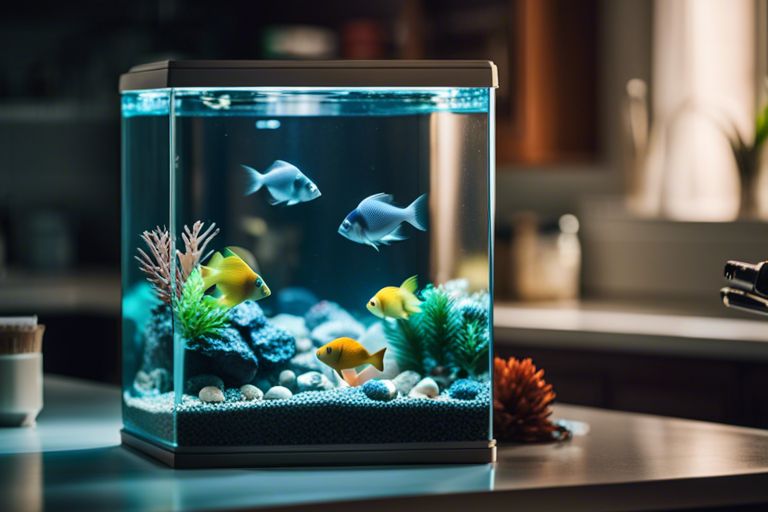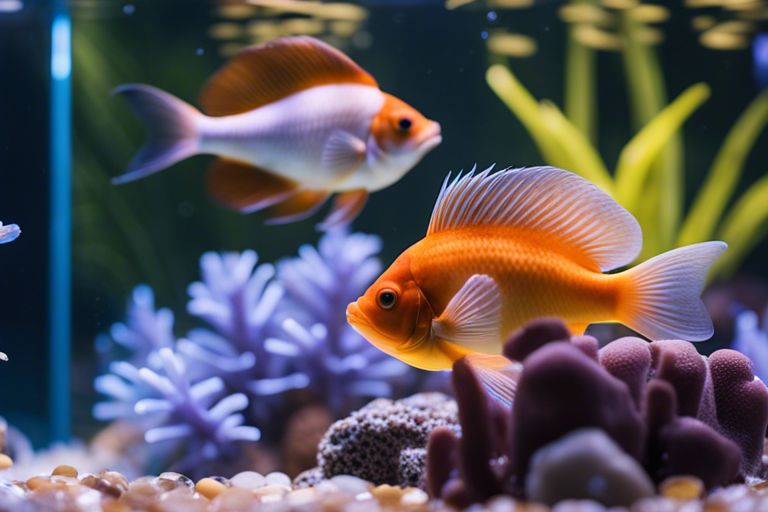Just like SUVs dominate the American automotive landscape, a vibrant fish tank can quickly become the centerpiece of any room. To maintain a pristine environment for your aquatic friends, it’s crucial to follow certain dos and don’ts when it comes to cleaning your fish tank. By understanding the best practices, you can ensure a healthy and sparkling clean habitat for your fish. Let’s explore the dos and don’ts that will help you keep your fish tank in top condition.

Setting Up Your Fish Tank
Choosing the Right Equipment and Supplies
For a successful start to your fish tank journey, it is crucial to select the right equipment and supplies. Choose a tank size suitable for the type and number of fish you plan to keep, ensuring proper filtration and aeration systems are in place. Additionally, invest in high-quality gravel, decorations, and fish food to create a healthy and thriving aquatic environment.
Establishing a Routine for Initial Setup
Setup your fish tank by first rinsing all equipment and decorations with water before placing them in the tank. Add treated water to the tank and let it sit for at least 24 hours to ensure temperature and water parameters stabilize. Test the water for ammonia, nitrites, and nitrates before introducing any fish. Once the water quality is optimal, carefully introduce your fish to their new home.
Understanding the importance of a well-thought-out initial setup routine is key to the overall success of your fish tank. By following these steps diligently, you can ensure a smooth transition for your fish and create a clean and healthy environment for them to thrive in.

Regular Maintenance Do’s
Proper Feeding Practices
The key to maintaining a sparkling clean fish tank starts with the proper feeding of your aquatic pets. Overfeeding can lead to excess waste and algae growth, so make sure to feed your fish only what they can consume in a few minutes. It’s also crucial to vary their diet with a mix of quality flakes, pellets, and live or frozen foods to ensure their nutritional needs are met.
Water Change and Filtration
Maintenance of your fish tank’s water quality is crucial for the health of your fish. Regular water changes, typically 10-20% of the total volume every 1-2 weeks, help remove accumulated waste and replenish crucial nutrients. Proper filtration system maintenance is equally important – clean or replace filter media regularly and monitor water flow to ensure optimal filtration performance.
Common Maintenance Don’ts
Overfeeding and Its Consequences
Overfeeding your fish is a common mistake that can have harmful consequences for your tank. Uneaten food will decompose, leading to a buildup of toxins like ammonia and nitrites. This can result in poor water quality, causing stress and even death to your fish. To prevent overfeeding, feed your fish small amounts at regular intervals and remove any uneaten food promptly.
Neglecting Water Quality Tests
One of the biggest mistakes in fish tank maintenance is neglecting to regularly test the water quality. Without knowing the parameters of your tank water, you won’t be able to address any issues that may arise. Testing for ammonia, nitrites, nitrates, pH levels, and temperature is crucial for maintaining a healthy environment for your fish. Invest in a good quality test kit and make testing a routine part of your tank maintenance schedule.
Water quality tests provide vital information about the condition of your tank and help you understand what adjustments are necessary to keep your fish healthy. Regular testing allows you to catch any fluctuations in water parameters early on and take corrective action before it affects the well-being of your aquatic pets.

Advanced Cleaning Tips
Many experienced fish tank enthusiasts have honed their cleaning techniques over the years to keep their tanks in pristine condition. Here are some advanced tips to help you up your cleaning game:
- Tackling Algae Growth Effectively
Algae Scrubber Use an algae scrubber to clean glass and decorations regularly. Adjust Lighting Control the amount of light your tank receives to prevent excessive algae growth. Tackling Algae Growth Effectively
Algae can quickly take over a fish tank if not controlled. To prevent algae growth, consider using an algae scrubber to clean the glass and decorations regularly. Additionally, adjusting the lighting levels in your tank can help control algae growth by limiting the amount of light available for photosynthesis.
- Managing Tank Decorations and Substrates
Re-Arrange Decor Rearrange tank decorations periodically to clean hard-to-reach areas. Vacuum Substrate Use a gravel vacuum to clean debris from the substrate without disturbing your fish. Managing Tank Decorations and Substrates
To effectively manage tank decorations and substrates, consider rearranging decorations periodically to clean hard-to-reach areas and prevent debris buildup. Use a gravel vacuum to clean the substrate without stirring up too much debris and disturbing your fish. Regular maintenance of tank decorations and substrates is key to keeping your aquarium clean and healthy.
Conclusion
Summing up, maintaining a sparkling clean fish tank requires a combination of regular maintenance tasks and avoiding common mistakes. By following the dos and don’ts discussed in this guide, you can ensure a healthy environment for your fish and a visually appealing aquarium. Remember to regularly clean the tank, keep up with water changes, monitor water parameters, and avoid overfeeding to prevent algae growth and maintain optimal water quality. With the right care and attention, your fish tank can remain a beautiful centerpiece in your home for years to come.
FAQ
Q: Why is it important to keep my fish tank clean?
A: It is important to keep your fish tank clean to maintain a healthy environment for your fish. Clean water reduces the risk of diseases and helps fish thrive.
Q: How often should I clean my fish tank?
A: You should perform regular maintenance on your fish tank, including partial water changes and cleaning the tank, at least once a week.
Q: What are the dos for keeping my fish tank clean?
A: The dos for keeping your fish tank clean include regular water testing, removing uneaten food, and vacuuming the substrate to remove debris.
Q: What are the don’ts for keeping my fish tank clean?
A: The don’ts for keeping your fish tank clean include avoiding overfeeding your fish, not washing filter media with tap water, and not using harsh chemicals to clean the tank.
Q: How can I prevent algae growth in my fish tank?
A: To prevent algae growth, you should control the amount of light your tank receives, avoid overfeeding your fish, and regularly clean the tank and filter.
Q: Can I use soap or detergent to clean my fish tank?
A: No, you should never use soap or detergent to clean your fish tank, as these substances are toxic to fish. Use a dedicated aquarium-safe cleaner or vinegar instead.
Q: Why is maintaining proper filtration important for a clean fish tank?
A: Proper filtration helps to remove waste and debris from the water, keeping it clean and clear. It also provides oxygenation for the fish and beneficial bacteria growth.











